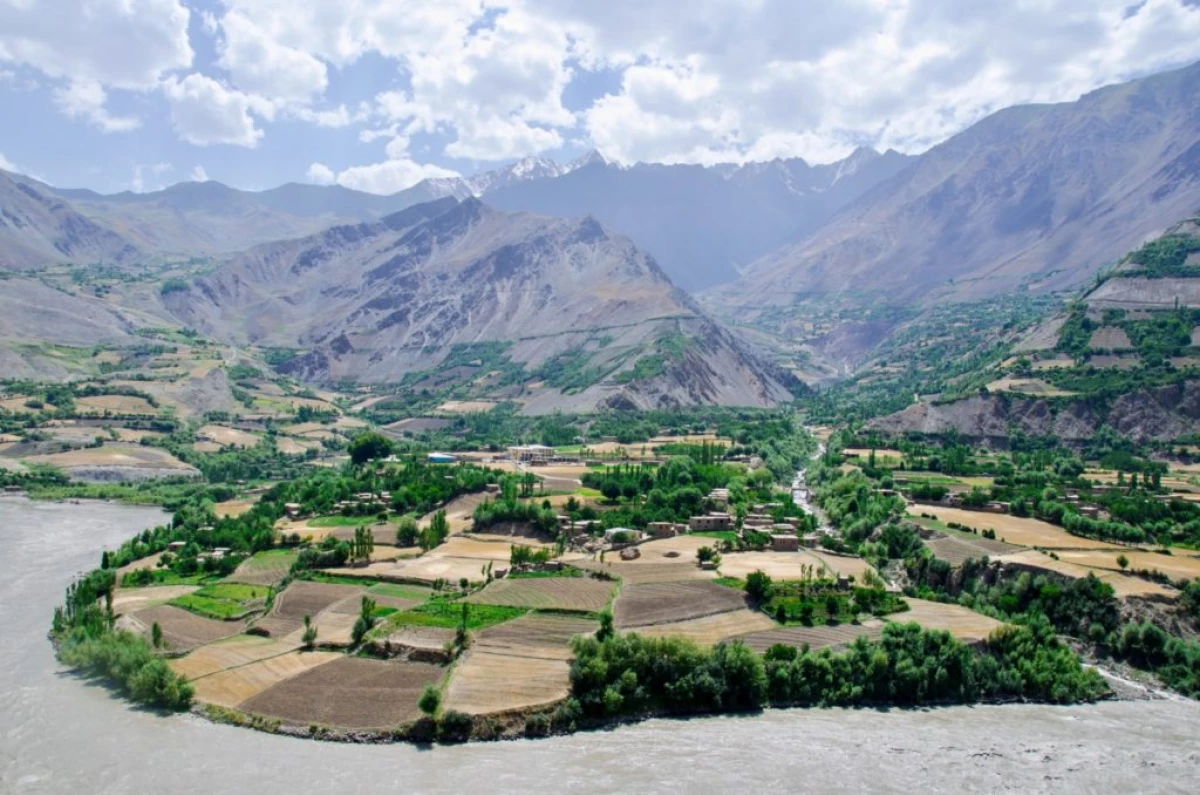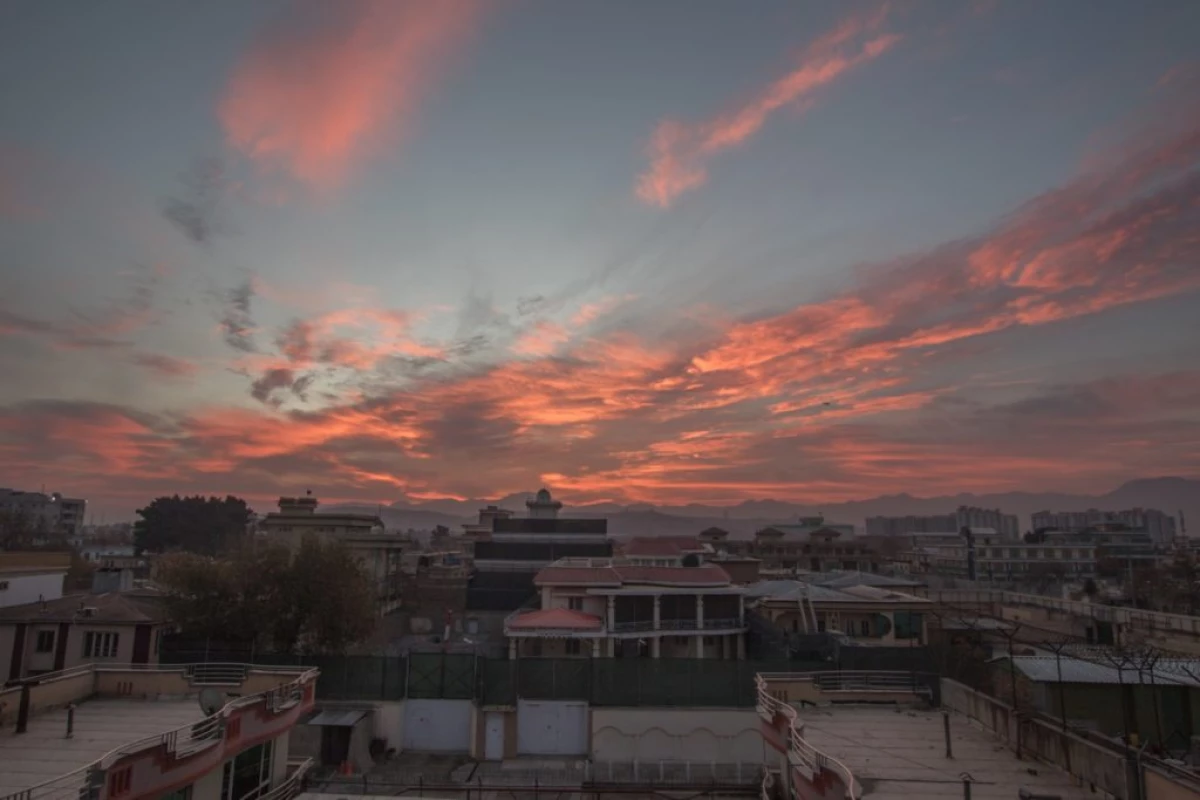The economy of Afghanistan, especially the infrastructure, significantly suffered from the war, which continues for more than 40 years. The country has no money to ensure more or less human life to their citizens. Therefore, while everything is kept on US investment, Pakistan and India.

Pakistan announced the approval of funds in the amount of 549 million rupees for two development projects in Afghanistan. A grant of 61 million rupees provides funding and economic substantiation of the construction of a new railway communication from Pakistani Peshawar to Afghan Jelalabad.
In addition, 488 million rupees were also aimed to build various medical facilities, including the Ginn hospital in Kabul (the second largest hospital in the country in just 200 beds with modern equipment), the hospital Aminulla Han Logari in the province of Logar and Nishtar Nephrological Hospital in Jalalabad, Province of Nangarhar. Help is part of the partnership of Pakistan in the field of development with a neighboring country within the framework of the Government program for the reconstruction and recovery of Afghanistan.
In general, Pakistani assistance for the development of Afghanistan in recent years has reached a total of $ 1 billion: it is aimed at investing in infrastructure, education, health care, agriculture and building the potential of Afghan specialists. Over the past decade, Pakistan provided thousands of scholarships to Afghan students. In 2020, the Higher Education Commission (HEC) announced about 3,000 scholarships in the amount of 1.5 billion rupees for Afghan students studying in various Institutions of Pakistan in various fields, including medicine, engineering, agriculture, management and computer science.
USA Against CoronavirusaAmerican assistance to the Afghan economy last year and at the beginning of this year was concentrated mainly in the fight against the coronavirus pandemic and its elimination of its consequences. In February 2021, within the framework of the Economic Damage Economic Damage Program, the United States Agency for International Development (USAID) supported 29 Afghan Agricultural enterprises on the world's largest annual exhibition of Gulfood 2021, which took place in Dubai.
Enterprises showed Afghan dried fruits, saffron, nuts, spices, honey and juices. Last year, the US government provided the Government of Afghanistan 100 artificial ventilation devices to support the fight against a pandemic. IVL devices were distributed through hospitals in the provinces most affected by COVID-19. In total, the United States last year allocated more than $ 36.7 million to combat COVID-19 in Afghanistan and $ 90 million in the form of accelerated World Bank contributions to continue their partnership with Afghanistan.
Despite the difficult situation with Coronavirus in Afghanistan last year, there were American projects in other fields in this country. In particular, the United States and Afghanistan signed an agreement on renewable energy, after which the government of Afghanistan signed agreements with independent electricity producers on the support of four renewed energy sources supported on the expansion of Afghan access to reliable and affordable electricity.

The United States has already spent billions of dollars in a ruled country destroyed on buildings and vehicles that were either thrown or destroyed, according to a report published on March 1, 2021, a special general inspector for Afghan restoration. At the same time, a significant part of the money was spent actually useless: the report states that from $ 7.8 billion spent since 2008 on buildings and vehicles, only buildings and vehicles worth $ 343.2 million were maintained in good condition and only $ 1.2 billion from $ 7.8 billion went to pay for buildings and vehicles that were used for their intended purpose.
The estate occurred in violation of numerous American laws, which the American agencies should not build or buy capital assets until they can prove that the beneficiary country has financial and technical resources and opportunities for effective use and maintaining these assets.
Tharek Farhadi, the former adviser to the Afghan government, said that the donor mentality often dominates, and this usually means that consultations with the Afghan government on projects are practically not conducted, no one asks whether Afghanistan is able to support American taxpayers restored at the expense of American taxpayers Infrastructure. Now the new President Joe Biden is reviewing a peace agreement signed by his predecessor Donald Trump with Taliban a year ago. He must decide whether all the troops lead to May 1, as promised in the contract, or remain and possibly extend the war. The conclusion of the troops will mean a significant reduction in American financing for the restoration of the Afghan economy.
Indian response PakistanuOn February 9, India and Afghanistan signed an agreement on the construction of the mine's dam in the amount of $ 236 million. The development project will ensure safe drinking water about 2.2 million people and will increase the effectiveness of irrigation facilities throughout the country. Development project plans were a vital component of foreign policy settlements of India in the neighborhood. Currently, about 150 development projects are carried out in Afghanistan, which the Indian government announced in 2020. New projects include an improvement in the road communication, the Water supply network of the Charikar city and the hydroelectric power station.
While many neighbors of India consider it as an "older brother", Afghanistan welcomes Indian presence in the region. New Delhi considers himself a key investor in the stability of Afghanistan, and its goals in this country were Trojaki: to ensure the preservation of democracy in Afghanistan, counteract the influence of Pakistan in this country and stop the presence of Taliban in the region, which can potentially lead to the resumption of terrorist activities.
The soft force was a permanent tool of India's foreign policy against Afghanistan. Since 2001, New Delhi has allocated more than a billion dollars on economic, humanitarian assistance and development assistance. In the western province, Herat was completed by a sign project, initiated by India, known as the flesh of Afghanistan-India, last year, as part of the fight against Coronavirus, India sent a vaccine to Afghanistan.
Renewable Energy Projects: Joint Investments of Three CountriesThree countries are involved in the renewable energy projects in Afghanistan: Turkey, India and the United States, from the USA, the United States is an investor in international development (USAID). Solar photovoltaic and wind power projects signed by Afghanistan in the fall of last year as part of an international transaction in the amount of $ 160 million will add 110 megawatts to the country's power system during the year. Projects are developed in Kabul, Balkha and Gerat. They will become the largest in the country in the field of alternative energy. The largest power plants in the framework of the project will be the solar station in the Balkha, the northern province having the function of Afghanistan's gateway to Central Asia. Its power will be 40 megawatt. Two more power plants with a capacity of 25 megawatts, solar and windmill, will be installed in the Western province Herat, not far from Iran's border with Turkmenistan. The fourth is floating solar power station - will be built on the dam brazed to the east of Kabul.
Currently, Afghanistan is an energy-dependent country: it imports 1200 megawatt energy from Iran, Tajikistan, Uzbekistan and Turkmenistan, since only 400 megawatts can be generated on its hydroelectric power plants. The country whose infrastructure was destroyed by decades of conflict, 7,500 megawatts are required, so that its almost 33 million people have access to electricity.
PerspectivesThe investment policy of foreign countries in Afghanistan is largely politicized, geopolitical interests are clearly visible in it. This can be noted in increasing investment rivalry in the Afghan market of India and Pakistan, the relationship between which has recently deteriorated significantly. Both the USA and India and Pakistan prefer to deal with the official authorities of the country in matters of investment, but there are those who do not tar build economic relations with the movement of the Taliban.
For example, Turkmenistan belongs to those that the authorities of which were negotiating on investment in infrastructure with representatives of the radical Islamist group who visited Ashgabat. Also among the trends of this year, you can note the attempts to penetrate the Afghan market of China, which, like Turkmenistan, agrees to invest in the economy of the territories of the country controlled by the Taliban. This is seen at this attempt to prevent investment expansion in the country of India, with which China has deteriorated a relationship after border clashes and advertisements by China began construction of HPP on Brahmaputre, against which India objects.
Posted by: Roman Mamchits
